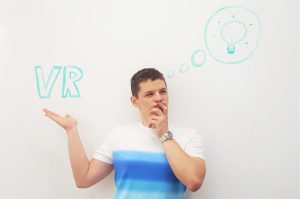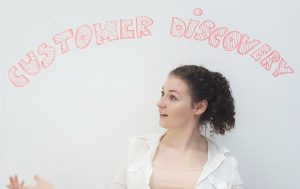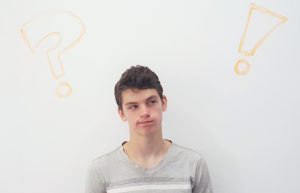Edyta Juda is a co-founder of VR Spectre. She has years of experience in market research, market analysis, and project coordination. She worked on tourism strategic planning for the city of Houston and was involved in several major tourism related projects. She studied international relations in New York, Paris, and Cracow.
This post is part of the NYU Summer Launchpad blog series featuring NYU entrepreneurs’ first-hand accounts of challenges faced in starting a business and the lessons learned along the way. Learn more about the NYU Summer Launchpad 2016 participants here.
Lessons Learned in Launching a Venture in an Emerging, Rapidly Changing Space
VR Spectre develops a modular eye tracking solution specifically designed for smartphone powered VR. With its innovative application of foveated rendering, VR Spectre enables high quality VR content to run smoothly on a smartphone while extending battery life. By implementing gaze control, VR Spectre enables users to point just by looking. This system is not only improving the VR interface, but is also a means of gathering useful user data for fixation and heat maps. VR Spectre’s technology is compatible with most mobile VR headsets and enables users to experience high-end gaming quality, immersive VR applications.
 Building a startup in a virtual reality space is exciting, especially now when VR is becoming more popular and has so many use cases - video games, live events, healthcare, real estate, retail, military, education, the list keeps growing. The fact that VR has so many applications, of which none are well established is not helpful for our startup, or at least we thought it would be problematic.
Building a startup in a virtual reality space is exciting, especially now when VR is becoming more popular and has so many use cases - video games, live events, healthcare, real estate, retail, military, education, the list keeps growing. The fact that VR has so many applications, of which none are well established is not helpful for our startup, or at least we thought it would be problematic.
Before we started the Summer Launchpad accelerator, we had an idea of why eye tracking will revolutionize the VR market, but we were unsure which value propositions of our product were most important to our customers and why. It’s easy to say, "my product is great and VR developers will love to use it to improve their applications," but it is more difficult to determine whether they will have a need for it and if so, what they will use it for, and the results they desire. During our time in the accelerator, we set out to answer these questions and validate the problem solution fit.
Customer Discovery is Key
 As we interviewed VR developers, experts, and early adopters we recognized their biggest challenges in the use of VR and what they need changed to improve their VR experience. The answers to the challenges was always straight forward–because VR is an emerging space, there are several aspects that needed improvement. A question that we put a lot of attention into is what needs to be improved and how does our solution fit in. The more people we interviewed, the more hypotheses we proved or disproved, and the more we realized that finding a vertical market for our product will be difficult.
As we interviewed VR developers, experts, and early adopters we recognized their biggest challenges in the use of VR and what they need changed to improve their VR experience. The answers to the challenges was always straight forward–because VR is an emerging space, there are several aspects that needed improvement. A question that we put a lot of attention into is what needs to be improved and how does our solution fit in. The more people we interviewed, the more hypotheses we proved or disproved, and the more we realized that finding a vertical market for our product will be difficult.
We found a number of problem patterns among our interviewees, however, we realized that depending on the category for VR usage, the needs of developers change. For example, a VR game developer would be more interested in the eye tracker as a pointing device than a VR developer in architecture, who might put more emphasis on the immersive experience of the VR apartment tour he is creating.
Use Your Intuition
 Taking into consideration that the virtual reality market is changing and growing so rapidly, it is crucial to keep your idea in check and follow your intuition. Using eye tracking in VR, especially mobile, is a new concept. While customer feedback is a must in the discovery process, it is important to remember that most developers have never tried or tested an eye tracker and are only able to guess what the benefits might be.
Taking into consideration that the virtual reality market is changing and growing so rapidly, it is crucial to keep your idea in check and follow your intuition. Using eye tracking in VR, especially mobile, is a new concept. While customer feedback is a must in the discovery process, it is important to remember that most developers have never tried or tested an eye tracker and are only able to guess what the benefits might be.
Although a large number of hypotheses can be proved or disproven through customer interviews, it is important to keep in mind that majority of the hypotheses can only be tested in the customer validation stage, when the developers will be able to test our product and evaluate the benefits.
Learn from those Who went Through the Discovery Process
Reaching out to companies who, like us, are developing add-ons to VR headsets and target similar audiences was truly helpful. We learned that some of the challenges these startups face correlated closely with our experiences.
The connections we made with other startups in the VR industry and the insights we received from the people in the community have been very helpful for us to better understand this emerging field better and shape our business development strategy.
Connecting with these entrepreneurs who are building businesses in the virtual and augmented reality space has been of tremendous value for us as we build and grow our venture.







